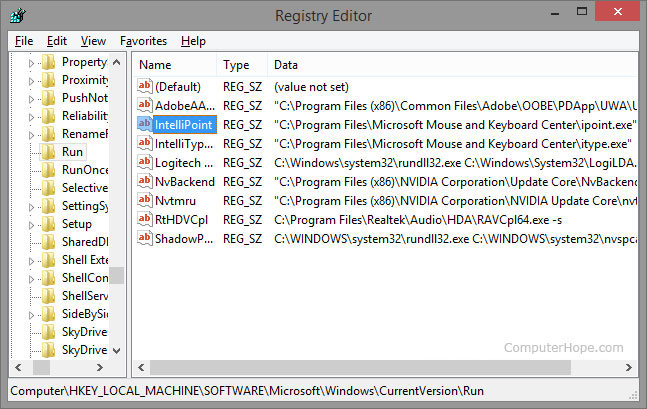Check Computer Startup Programs
How to identify what startup programs are safe to disable
Updated: 12/31/2020 by Computer Hope
When viewing startup programs in the registry, msconfig, or Task Manager, it can be difficult to know which programs should or should not be loading. This page contains steps on how to identify startup programs and help determine if you want them to load.
Tip
As a general rule, it is safe to remove any startup program. If a program starts automatically, it's usually because they provide a service that works best if it's always running, such as an antivirus program. Or, the software may be necessary to access special hardware features, such as proprietary printer software. In other cases, the software loads at startup merely because that makes it load faster when you manually start the program.
To identify a startup program, determine the file name and search on the file name. If you already know the file name of the startup program, use the search found at the top and bottom of this page.
If you have not yet identified the file name, follow the steps below for determining the file name using the msconfig, registry, or Task Manager in new versions of Windows.
- System Configuration (msconfig)
- Windows registry
- Windows Task Manager
System Configuration (msconfig)
Note
Microsoft Windows 8 and newer has moved startup programs from the System Configuration to the Windows Task Manager.
Open the Startup tab in the Windows system configuration, which can be opened by running msconfig from the run or search line. Once in the Startup tab, you can find the file name of the program under the Command column. You may need to expand the column size by hovering the pointer over the column divider, then click-and-drag the column to see the file name.

As seen in the example above, after expanding the Command column, you can see the command below.
C:\Program Files\Realtek\Audio\HDA\RAVCpl64.exe -s
In this example, RAVCpl64.exe is the file name you would use in a search to identify its purpose on the computer.
Tip
The startup program is often going to be an executable file, which means it ends with .exe file extension. Also, many programs in the System Configuration have command switches (such as -s or /c); these switches should not be included in your search.
Windows registry
Note
Keep in mind that making an improper change in the registry can cause problems with your computer.
Open the Windows registry by running the Regedit command from a run or search line. Once in the registry, browse to the path shown below.
HKEY_LOCAL_MACHINE\SOFTWARE\Microsoft\Windows\CurrentVersion\Run
Once in the Run folder, you see one or more programs that are running each time Windows starts, as shown in the picture below.

As seen in the example above, after expanding the Data column, you can see the full file path value for the IntelliPoint program.
C:\Program Files\Microsoft Mouse and Keyboard Center\ipoint.exe
In this example, "ipoint.exe" is the file name you would use in a search to identify its purpose on the computer.
Windows Task Manager
With the introduction of Microsoft Windows 8, it is now possible to view startup programs, their impact on the computer's boot time, and enable or disable the startup programs.
Open Task Manager by pressing Ctrl+Alt+Del on the keyboard and choosing Task Manager. Once in the Task Manager, open the Startup tab, find the startup program, right-click the program name, and select Properties.

As seen in the example above, after right-clicking WhatPulse and selecting Properties, the file name whatpulse.exe is shown. Searching for this file name would identify the purpose of this computer program.
Check Computer Startup Programs
Source: https://www.computerhope.com/issues/ch001641.htm

0 Response to "Check Computer Startup Programs"
Post a Comment